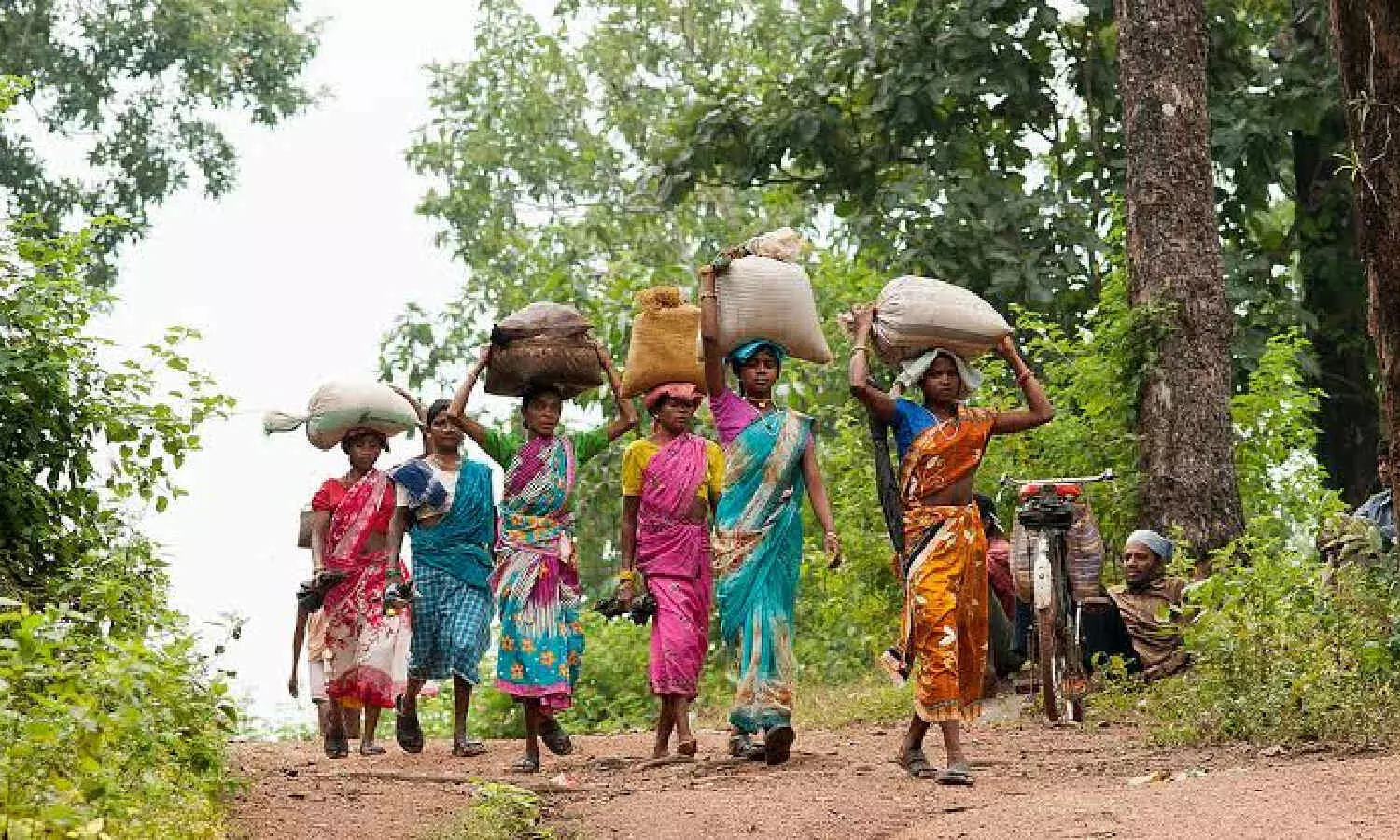Roads, wildlife, and connectivity: Telangana govt charts roadmap to protect tribals’ welfare
Konda Surekha emphasised that every project will be assessed with a people-first and forest-first approach, ensuring that tribal communities are respected
By Newsmeter Network
File Photo
Hyderabad: Speaking about the government’s commitment to forest protection and Adivasi rights, Telangana Forest, Environment and Endowments Minister Konda Surekha said, “We will not hurt the sentiments of tribal communities nor will we allow any violation of forest laws.”
She was speaking at a key meeting of the Telangana State Board for Wildlife (SBWL) at the Secretariat on Monday.
The meeting was also co-chaired by Panchayat Raj Minister Dr Anasuya Seethakka, with several public representatives in attendance. The meeting focused on reviewing ongoing and proposed developmental works in forest areas, with a strong emphasis on ecological balance and tribal harmony.
Here are the key discussions and highlights of the meeting:
1. Review of Previous Proposals and Project Status
Forest Roads: Out of six proposed road projects in wildlife areas, only one was recommended and approved by the National Board for Wildlife (NBWL). The remaining five were rejected as they were intended to connect unauthorised tribal settlements, which could violate forest norms.
Optic Fiber Cables (OFC): The board reviewed eight OFC proposals. Of these, five projects falling under the legally permitted Right of Way (RoW) were cleared by the State government. The remaining three, which pass through forest stretches, were approved by the NBWL in its 84th meeting on June 26.
Mulugu Power Substation: The NBWL rejected the proposal to build an 11KV power line and approach road in Mulugu district, citing ecological concerns in its present form.
Peddagattu Lift Irrigation Project (Nalgonda): This critical irrigation project received approval from the NBWL after a thorough evaluation.
Wildlife Passageways: The board suggested revised designs for animal passages across 22 rural road projects (18 under PMGSY and 4 under R&B) to ensure safe movement of wildlife. A Central committee comprising officials from MoEF&CC, NTCA, WII, and the State Forest Department will conduct field inspections in August.
Revisions in Animal Underpasses: Divisional Forest Officers (DFOs) have been directed to revise animal underpass plans, taking into account the terrain, forest type, wildlife density, and vehicle traffic.
Cell Phone Towers: All 13 mobile towers proposed by BSNL and Airtel in forest regions were approved by the NBWL in its meeting on March 12.
2. Formation of Standing Committee of SBWL
To improve efficiency and decision-making in wildlife governance, the Standing Committee of SBWL was officially constituted through GO 27 dated March 13, under Section 6A(1) of the Wildlife Protection Act, 1972.
What is the mandate of the committee?
- Advise the State Government on wildlife conservation efforts.
- Recommend creation and management of protected areas such as sanctuaries and national parks.
- Assess and advise on development activities affecting forests and wildlife.
- Propose measures to reduce human-animal conflict.
- Take up any other issues referred by the State Government.
A quorum of 50 per cent of members is required for any meeting to make decisions.
3. Use of Check Post Revenue for Forest Welfare
Revenue collected at forest and tiger reserve check posts, as per Section 28(d) of the Wildlife Protection Act, is deposited into the Tiger Conservation Foundation accounts. These funds are being used for:
- Anti-poaching operations
- Plastic-free zone enforcement
- Fire protection and emergency response
4. Establishment of Tiger Cell at Aranya Bhavan
To closely monitor tiger and leopard activity outside designated reserves, a dedicated Tiger Cell will be established at the Forest Department Headquarters (Aranya Bhavan). This unit will track big cat movements and record human-wildlife conflict cases in areas like Kamareddy, Nirmal, Jagityal, Eturnagaram and Kinnerasani.
5. Study on Impact of Heavy Vehicles through Kawal Tiger Reserve
To address growing concerns about heavy traffic through the Kawal Tiger Reserve, the board will carry out a comprehensive study focusing on:
- Vehicle classification by axle and weight
- Whether the current road width and strength can support heavy transport
- Toll gate locations and fee structures
- Number of wildlife deaths due to road accidents
- Effects of noise, dust, and air pollution on flora and fauna
Minister Konda Surekha emphasised that every project will be assessed with a people-first and forest-first approach, ensuring that tribal communities are respected and the sanctity of forest laws is maintained.